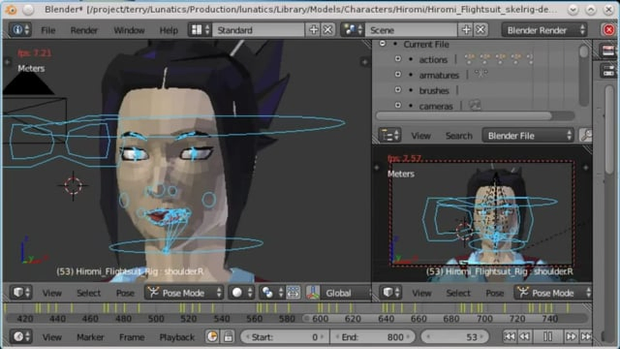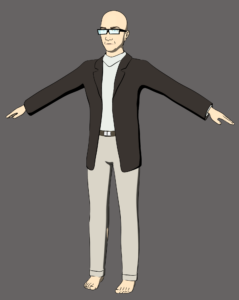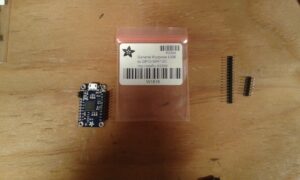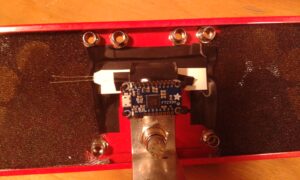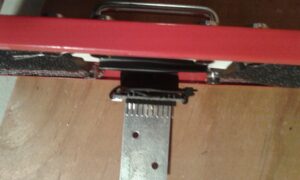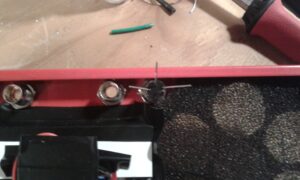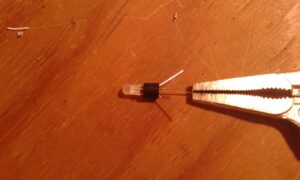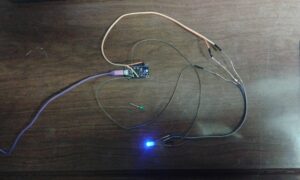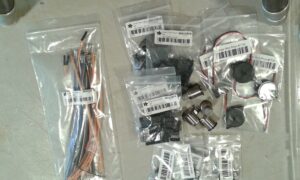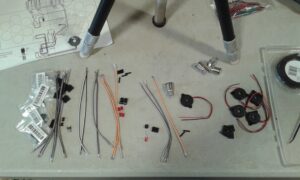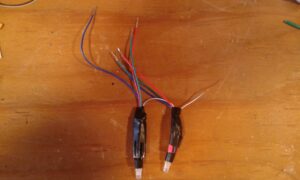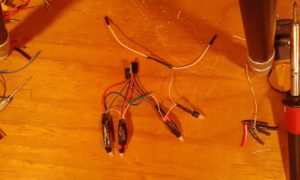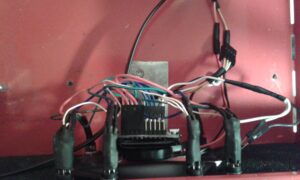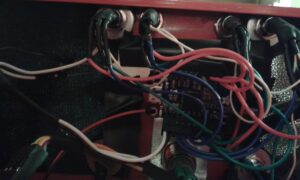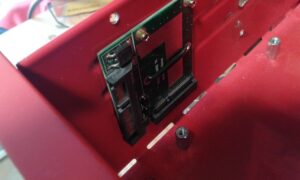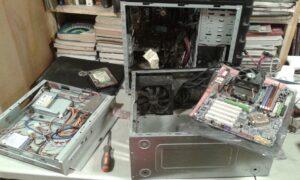Highlights:
- Keneisha demonstrated a skeletal face rig on her original character, suggested we use the same rig on “Lunatics!” characters, and we adopted them.
- Struggling with software contract. The client didn’t want to pay, because their installer wasn’t fully installing GTK3, which the program needed to run. I demonstrated that it would run once the dependencies were in place, and I was not the expert on their installer. Extremely frustrating!
- Finished the 2016 Profit & Loss statement and completed our tax filing. Also had student financial aid to consider this year.
- Completed the vent stack on the back of the Render Cluster.
- Designed the front panel electronics and harness for the Render Cluster blades. Assembled them all.
- Began working on the code to control them (“Blinken”).
- Rendered our model of Allen Emerson. As far as I can tell, this model was done by Andrew Pray and hasn’t been altered. He fits in fine with the others, though.
- Ariel drew concept sketches for “Momo Aiai” and “Momo Kurai”, which I wanted to have a different, more stylized appearance to stand out from the live characters as obviously cartoonish.
Skeletal Face Rig Demo
Recently, Keneisha Perry (character modeler and rigger), has started replacing the original shape-key face rigs for our character models with skeletal rigs, which are simpler and somewhat easier to control. This is a quick demonstration of the rigs for “Anya” and “Hiromi” along with a demonstration of lipsync automated using Papagayo (we did this before, but want to prove it still works!).
Video Summary
This video was made in 2020 and revised in 2024, using material I had available from April 2017.
Correspondence
- Still trying to get client to pay on software contract. This got ugly.
- Keneisha Perry redesigned face-rigs using armatures.
- Lunatics Presentation at ArlingCon 2017.
Keneisha demoed an armature-based face rig she designed for one of her own characters; proposed we change Lunatics to use the same method; and since she is the main one using the rigs, of course we did that.
I should never have quoted an hourly consulting fee for programming! If it doesn’t work the way they want, they still expect to not have to pay, regardless of whether my contribution is working. If it were a turn-key quote, then it would be my responsibility to find a solution — but also, I would’ve billed enough to cover such contingencies.
Art
I found that our sources contained a model for Allen Emerson (who will show up in episode 4), that was modeled by Andrew Pray. Despite being made by a different modeler, it seems entirely consistent to the style for the project:
Ariel, who of course, also voiced Georgiana, is also an “OC” artist, so I asked her to do concepts for the “digital girlfriend” character, “Momo Aiai” (a parody of vocaloids and AI companions), which I wanted to be in a distinct, clearly “cartoonish” style from the “real world” characters (even though they are also cartoons in our real world…). She came up with a couple of character concepts. We didn’t go any further, since these won’t be needed until episode 4 or 5:

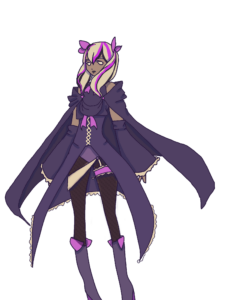
A “dark” alter-ego counterpart to Momo Aiai.
For the Render Cluster, I designed front panel indicator lights, to be operated by a microcontroller from Ada Fruit. This was clearly not essential from a practical perspective, but how could I possibly build a compute cluster without giving it front panel “blinkenlights”? It would be a terrible missed opportunity!
So I designed the modifications to the front panels of the drawers. This also incorporates the design of the front panel vents on either side:
Photos
The front panel indicators were controlled by this tiny microcontroller board from Adafruit, which was attached to the front panel on a construction bracket from Home Depot:
There are mounting bezels for six LEDs, in addition to the power button in the center (which also holds the bracket on.
For this project, I used tricolor LEDs, which could generate a range of colors with the internal red, green, and blue LED elements:
So I also had to make six tiny harnesses for the LEDs. I think in the future, I might have decided to put these on a printed circuit board, but I did not have the facilities to make that, so it’s wiring harnesses on this build:
Then each had to be assembled into the front panel:
Also this month, I installed adapters for the SSDs each render blade would use for its local system storage:
Although the Render Cluster was the star project, I was also repairing other computers. I believe these are “Sintel” in the back (my workstation, still in use in 2024), “Giles” (file server) on the right, and the first incarnation of the Home Theater Personal Computer (HTPC) for the Lib-Ray project, on the left. There is also a laptop in the back, but I’m not sure which one that is — probably for one of my family.
